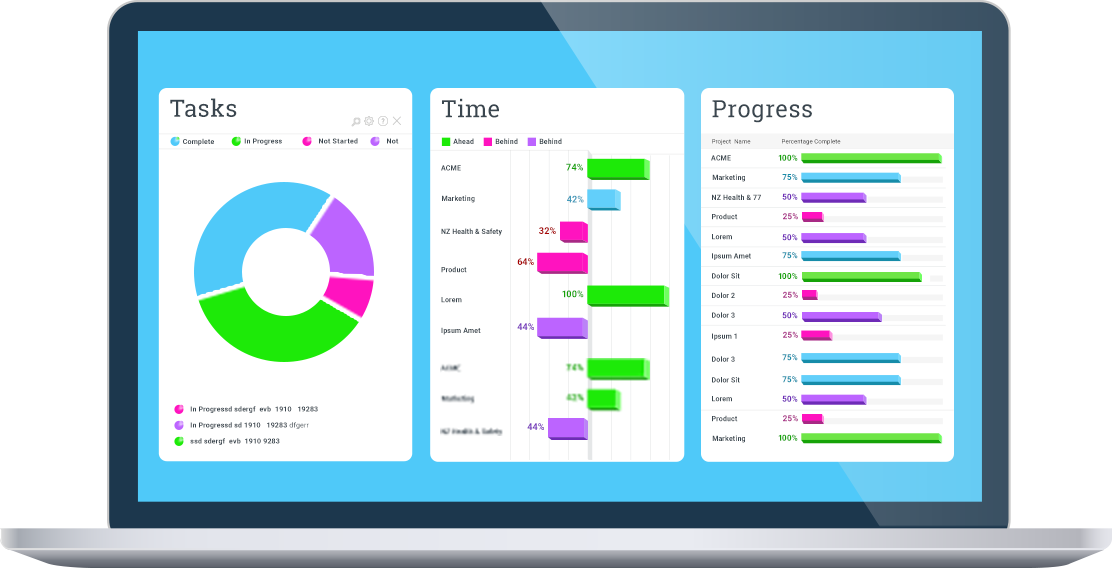
Unlock Success
Masterful Project Management at Every Stage
Organizing complex projects
Enhancing collaboration
Ensuring projects
Completion on time
Committed budget
Organizing complex projects
Enhancing collaboration
Ensuring projects
Completion on time
Committed budget



Project Efficiency: Navigating Tasks, Automation, and Integration
Project management software refers to a class of computer applications specifically designed to help individuals and teams plan, execute, monitor, and control projects. These software tools provide a range of features and functionalities that assist in managing various aspects of a project, from defining tasks and timelines to tracking progress and communicating with team members. They are particularly valuable for organizing complex projects, enhancing collaboration, and ensuring that projects are completed on time and within budget.
Learn more details about project management software →

Efficient Minute-by-Minute Timesheet Logging for Productivity Tracking
In a minute-by-minute timesheet log, record activities succinctly. Utilize alternating entries for work and breaks, such as "Work Break Work Lunch," noting each minute's focus. Keep it concise to easily track time allocation, providing a detailed overview of daily productivity and ensuring efficient time management.
Get more details about timesheet →
Time-Saving Efficiency Through Task Automation
Automating tasks streamlines repetitive processes, reducing manual effort and enhancing efficiency. By leveraging automation tools or scripts, you can save time, minimize errors, and allocate energy to more strategic and creative aspects of your work, ultimately increasing productivity and improving overall workflow.
Get more details about workflow →


Enhanced Workflow Harmony: Seamless Integration with Preferred Apps
Seamlessly integrate your preferred applications to enhance workflow efficiency. By connecting your favorite apps, you enable data sharing, automate processes, and create a unified workspace. This integration optimizes collaboration and ensures a smoother experience, tailoring your digital environment to your specific needs and preferences.
Key features and benefits of project management software
Task and Activity Management: Project management software allows you to break down a project into smaller tasks or activities. You can assign responsibilities to team members, set due dates, and establish dependencies between tasks. This helps ensure that everyone knows their role and responsibilities, and that tasks are completed in the correct order.
Timeline and Scheduling: These tools enable you to create visual timelines, Gantt charts, or other scheduling views that illustrate the project's overall timeline and task dependencies. This helps project managers and team members visualize the project's progress and make informed decisions about resource allocation.
Collaboration and Communication: Many project management software solutions offer communication features such as team discussions, file sharing, and commenting on tasks. This fosters collaboration among team members, allowing them to share updates, ask questions, and provide feedback in a centralized platform.
Resource Management: You can allocate and manage resources, including team members, equipment, and materials, within the software. This ensures that resources are optimally utilized and helps prevent overallocation or conflicts.
Budget and Cost Tracking: Project management software often includes tools for estimating, tracking, and managing project costs. This can involve creating budgets, tracking expenses, and comparing actual costs to the projected budget.
Progress Tracking and Reporting: These tools provide real-time visibility into the project's progress. You can generate reports and dashboards that show key performance indicators (KPIs), milestones achieved, and any potential delays. This allows project managers to make data-driven decisions and keep stakeholders informed.
Risk Management: Some project management software solutions offer features to identify, assess, and mitigate risks associated with the project. This helps project managers proactively address potential issues that could impact the project's success.
Integration and Automation: Project management software can integrate with other tools and software used by your organization, such as calendars, email, and document management systems. Automation features can streamline repetitive tasks and workflows.
Scalability: These tools are designed to handle projects of various sizes and complexities, from simple tasks to large, multi-phase initiatives.
Cloud-Based Access: Many modern project management software solutions are cloud-based, allowing team members to access project information from anywhere with an internet connection. This enhances flexibility and remote collaboration.